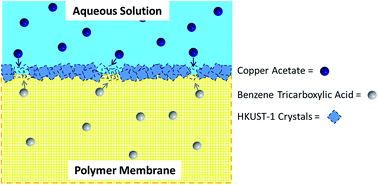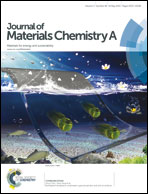Improving the permeance of hybrid polymer/metal–organic framework (MOF) membranes for organic solvent nanofiltration (OSN) – development of MOF thin films via interfacial synthesis
Abstract
In situ growth (ISG) of metal–organic frameworks (MOFs) within the pores of integrally skinned asymmetric polymer membrane supports has previously been shown to outperform mixed matrix membranes (MMMs) for organic solvent nanofiltration (OSN) applications. However these membranes have the disadvantage of low flux performances. In order to improve solvent permeance through hybrid MOF/polymer membranes a fabrication methodology to produce MOF thin film composite membranes (MOF-TFCs) has been developed. Interfacial synthesis was utilised to produce a thin layer of HKUST-1 on Polyimide P84 ultrafiltration supports. Two different fabrication methodologies were employed; methodology A resulted in the HKUST-1 layer growing above the polymer membrane surface and methodology B resulted in HKUST-1 growth embedded in the surface of the polymer support membrane. The MOF-TFCs produced via methodology A were shown to have similar solute retentions as ISG membranes; however the permeance values achieved were over 3 times higher than that of the ISG membranes.


 Please wait while we load your content...
Please wait while we load your content...